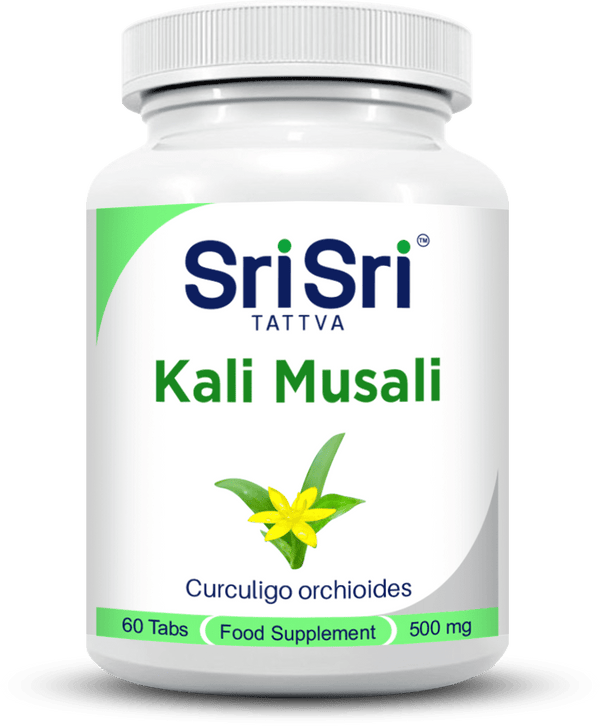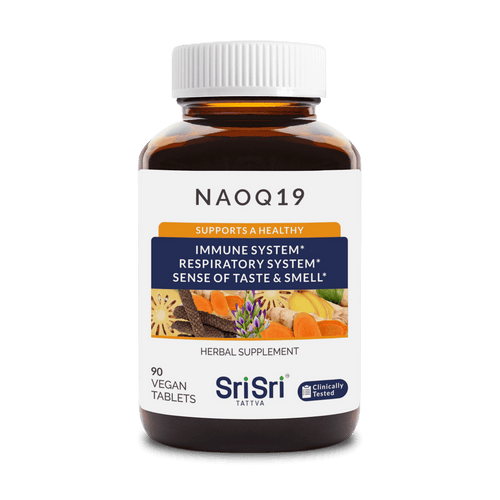What is Vata Dosha?
Vata means to move or blow like the wind. Vata controls all the moves in the mind and body. It consists mostly of two elements: air and space. Along with breathing, it controls the flow of blood through the body.
There are three Ayurvedic body types. Vata Dosha is thought to be the first because Pitta and Kapha dosha can't function without it. Vata needs to be kept in balance at all times.
Are you one of those people who struggle to sit in a place for more than a minute? Are you a light sleeper? Do you tend to get dry skin often? Then chances are you have dominance of vata dosha. Ayurveda, a traditional Indian system of medicine, recognizes three doshas- Vata, Pitta, and Kapha. Among these, Vata dosha is the one that governs creativity, movement, and change. When in harmony, Vata manifests as a source of vitality and inspiration, but when it goes out of balance, it can lead to anxiety, restlessness, and insomnia- hindering your overall well-being.
In this article, we delve into the intriguing principle of Vata dosha- exploring its unique characteristics, the causes of Vata imbalance, and most importantly, how to restore balance to your Vata levels through dietary and lifestyle changes.

Vata Dosha characteristics
Vata is composed of the elements of air and space and is characterized by qualities such as lightness, dryness, coldness, roughness, and mobility. Individuals with a predominance of Vata dosha are typically creative, energetic, and enthusiastic, but can also be prone to anxiety, nervousness, and mood swings.
The physical characteristics of vata dosha are thin, bony, and angular with prominent joints and veins. They may also have dry skin, brittle nails, and a tendency towards constipation. Vata types are typically fast-moving and active, but can also be easily fatigued and have difficulty sleeping.
In terms of mental and emotional characteristics, vata types are known for their creativity, curiosity, and quick thinking. They are also prone to worry, fear, and anxiety, as well as being easily distracted and forgetful. Vata individuals are often drawn to artistic pursuits such as music, dance, and writing.
To balance vata dosha, it is important to focus on creating stability and grounding. This can be achieved through a routine, including consistent meal times and sleep patterns. Warm, nourishing foods such as soups and stews are recommended, as well as gentle exercises such as yoga or walking. Vata types may also benefit from practices such as meditation or aromatherapy to calm their restless minds.
Vata dosha is characterized by the qualities of cold, lightness, dryness, and movement. People who are predominantly Vata in nature tend to be thin, have a light frame, and have difficulty gaining weight. They also have a tendency towards cold hands and feet, dry skin, and dry hair. Mentally, they tend to be creative, imaginative, and quick to learn. However, when out of balance, they may experience anxiety, fear, and a sense of being ungrounded.
The five types of Vayu
In Ayurveda, Vayu is the Sanskrit word for air and wind and is considered the elemental force that governs vata. Vayu is believed to be present in the breath, the movement of the limbs, and the flow of bodily fluids. It is also associated with the nervous system and the mind. Ayurveda teaches that a balance of the three doshas is necessary for good health and that imbalances can lead to physical and mental disorders. Here are brief descriptions of the five Vayus in Ayurveda:
Prana Vayu (energy for inhalation)
Prana Vayu is the energy of inhalation located in the head and chest. It is responsible for bringing in fresh oxygen and prana (life force energy) into the body. Prana Vayu is associated with mental clarity, enthusiasm, and creativity. When Prana Vayu is imbalanced, it can lead to respiratory problems, lack of focus, and confusion.
Samana Vayu (digestion)
Samana Vayu is the energy of digestion and is located in the area around the navel. It is responsible for breaking down food and assimilating nutrients. Samana Vayu is associated with an intense digestive fire and the ability to maintain a healthy weight. When Samana Vayu is imbalanced, it can lead to digestive issues such as bloating, constipation, and malabsorption.
Vyana Vayu (circulation)
Vyana Vayu is the energy of circulation and is located throughout the body. It is responsible for distributing prana and nutrients to all the cells of the body. Vyana Vayu is associated with healthy circulation, good cardiovascular health, and strong immunity. When Vyana Vayu is imbalanced, it can lead to poor circulation, weak immunity, and fatigue.
Udana Vayu (speech)
Udana Vayu is the energy of speech located in the throat and neck. It is responsible for the upward movement of energy and is associated with the ability to speak, sing, and communicate effectively. Udana Vayu is also responsible for expelling waste products from the body, such as carbon dioxide. When Udana Vayu is imbalanced, it can lead to problems with speech, as well as respiratory problems and poor elimination.
Apana Vayu (elimination)
Apana Vayu is the energy of elimination and is located in the lower abdomen and pelvic area. It is responsible for the downward movement of energy and is associated with the elimination of waste products from the body. Apana Vayu is also responsible for reproductive health and sexual function. When Apana Vayu is imbalanced, it can lead to problems with elimination, reproductive issues, and low energy.

Possible Reasons for High Vata Levels
Vata imbalance can occur due to several factors such as stress, poor diet, lack of sleep, and overstimulation. Several causes of vata imbalance include lifestyle factors, dietary habits, and environmental influences.
One of the primary causes of vata imbalance is stress. In today's fast-paced world, stress is almost unavoidable, and it can cause vata to become deranged. Stressful situations can lead to anxiety, restlessness, and insomnia, which are all classic symptoms of vata imbalance. People who have a vata-dominant constitution are particularly susceptible to stress-related imbalances.
Another factor that can cause vata imbalance is an irregular daily routine. Vata thrives on routine and structure, and when the routine is disrupted, it can lead to vata becoming deranged. This is why it's important to have a regular sleep schedule, eat meals at consistent times, and engage in regular exercise.
Dietary factors can also contribute to vata imbalance. Vata is aggravated by dry, light, and cold foods, so consuming these types of foods can cause vata to become deranged. Eating a diet that is too low in fat can also lead to a vata imbalance, as fat is important for lubricating the joints and nourishing the nervous system.
Environmental factors can also play a role in vata imbalance. Living in a cold, dry, and windy climate can aggravate vata, as can spending too much time in air-conditioned environments. Excessive travel, especially by plane, can also cause vata to become deranged, as it disrupts the body's natural rhythms.
Signs vata is out of balance
When Vata is out of balance, it can manifest in a number of ways such as
- Anxiety and restlessness
- insomnia
- dry skin and hair
- constipation
- joint pain
- gas and bloating
- fatigue
- low energy
- light-headedness
- irregular menstrual cycles
- vata dosha diet
Lifestyle Changes to Balance Vata Dosha
The good news is that balancing Vata dosha is possible through lifestyle changes.
Regular routine
One effective way to balance Vata dosha is through a regular routine. This means waking up and going to bed at the same time every day, eating meals at consistent times, and scheduling regular exercise and relaxation. Additionally, incorporating gentle yoga or stretching into your daily routine can help balance Vata dosha by promoting circulation and calming the nervous system.
Herbs to balance vata dosha
Many herbs can help balance vata and restore harmony to the body and mind. Sri Sri Tattva offers an optimal blend of three herbs Ashwagandha, Brahmi and Haritaki in this Vata Balance Kit for better immunity, balanced levels of air and ether elements, better cognition, focus, peace of mind and clarity of thought, healthy skin and hair, better sleep, reproductive health, and better digestive health.
One such herb is ashwagandha, which is known for its calming and grounding effects. It is particularly helpful for people who are feeling stressed or overwhelmed. Another herb that is beneficial for vata is Brahmi, which is renowned for its ability to enhance mental clarity and focus. It is also known to soothe the nervous system and reduce anxiety. Other herbs that are commonly used for balancing vata include ginger, cinnamon, turmeric, and licorice. These herbs are warming and nourishing, and they help to improve digestion, circulation, and overall vitality. Incorporating these herbs into one's diet or taking them as supplements can be a powerful way to support vata balance and promote overall health and well-being.
Importance of diet
Another important aspect of balancing Vata dosha is diet. Foods that are warm, moist, and grounding can help balance Vata dosha. This includes cooked vegetables, soups, stews, and warm grains like oatmeal or quinoa. Avoiding cold, dry, and processed foods can also help balance Vata dosha. Additionally, drinking warm beverages like ginger tea or warm water with lemon can help keep the body hydrated and promote healthy digestion.
One of the most effective ways to balance Vata levels is through a Vata dosha diet. This diet focuses on foods that are warm, moist, and grounding. Some of the key foods that should be included in a Vata dosha diet are:
- Warm, cooked foods such as soups, stews, and casseroles
- Root vegetables such as sweet potatoes, carrots, and beets
- Grains such as rice, quinoa, and oats
- Warm, nourishing drinks such as herbal teas and warm milk
- Healthy fats such as ghee and coconut oil
- Spices such as ginger, cinnamon, and turmeric
- Nuts and seeds such as almonds, cashews, and sunflower seeds
Foods to Avoid
When trying to balance Vata levels, certain foods should be avoided as they can exacerbate Vata imbalance. These include:
- Uncooked, raw, or frozen foods like yogurt, salads, and smoothies should be avoided.
- Dry foods such as crackers and popcorn
- Caffeine and other stimulants
- Spicy foods such as chili peppers and cayenne pepper
- Light and airy foods such as rice cakes and rice crackers
- Legumes such as beans and lentils
Lastly, incorporating self-care practices into your daily routine can help balance Vata dosha. This includes practices like meditation, aromatherapy, and massage. Taking time to relax and unwind can help calm the mind and promote a sense of balance and peace.
Vata Dosha Diet To Follow
When it comes to keeping Vata in balance, your eating habits and choices are crucial. Vata thrives in a calm and peaceful dining environment when you pay full attention to your meals. A Vata dosha diet consists of highly nourishing foods that improve your appetite, aid digestion, support elimination, and nourish your body.
Here are some meal suggestions to help Vata and address how to reduce its effects:
Breakfast
In the morning, your first meal is essential to uplift your mood and energize your body after a night of fasting. To get your body going and keep it agile, consider these Vata-pacifying options:
- A hearty breakfast with eggs, avocado, buttered toast, and sautéed veggies.
- Hot cereals like porridge, oatmeal, and rice pudding paired with a glass of hot milk.
- Enjoy a slice of bread with toppings like maple syrup, almond butter, honey, cinnamon, or even ginger and cloves for a delightful start to your day.
Lunch
Keeping your midday meal nourishing and filling will help you answer the question of how to balance Vata while also keeping those between-meal snacks at bay. For a Vata-pacifying lunch, consider including these options:
- Begin with a small salad featuring cooked beans, mung dal, and coconut, dressed with a tangy lemon and vinegar dressing.
- Opt for a combination of steamed rice, vegetables, and fish.
- If you prefer a more elaborate meal, consider a Vata-friendly diet that includes pesto, pasta, potato leek soup, baked tofu, cheese, and pine nuts.
Dinner
To balance Vata, it's best to keep your dinner light and simple. A nourishing yet small evening meal can go a long way in maintaining Vata's equilibrium. Try these Vata-friendly dinner options for the best results:
- Opt for soothing soups from carrots, potatoes, mushrooms, or your preferred vegetable.
- Consider baked potatoes, sweet potatoes, beans, or other light alternatives.
Some Organic Supplements That Can Help You Balance Vata
Sri Sri Tattva offers ayurvedic products free of harmful chemicals and perfect for balancing Vata.
- Kali Musli - Vitality & Vigor
- Vata Balance Kit
Final Words
Keeping Vata balanced is essential for overall well-being, as it's the leader of the three body types, with Pitta and Kapha dependent on its equilibrium. A Vata-balancing diet, characterized by nourishing foods and mindful eating, plays a significant role, with healthy breakfasts, substantial lunches, and light dinners. Organic supplements like SriSri Tattva's Kali Musli and the Vata Balance Kit can further aid in achieving this balance and can possibly enhance vitality and well-being.





